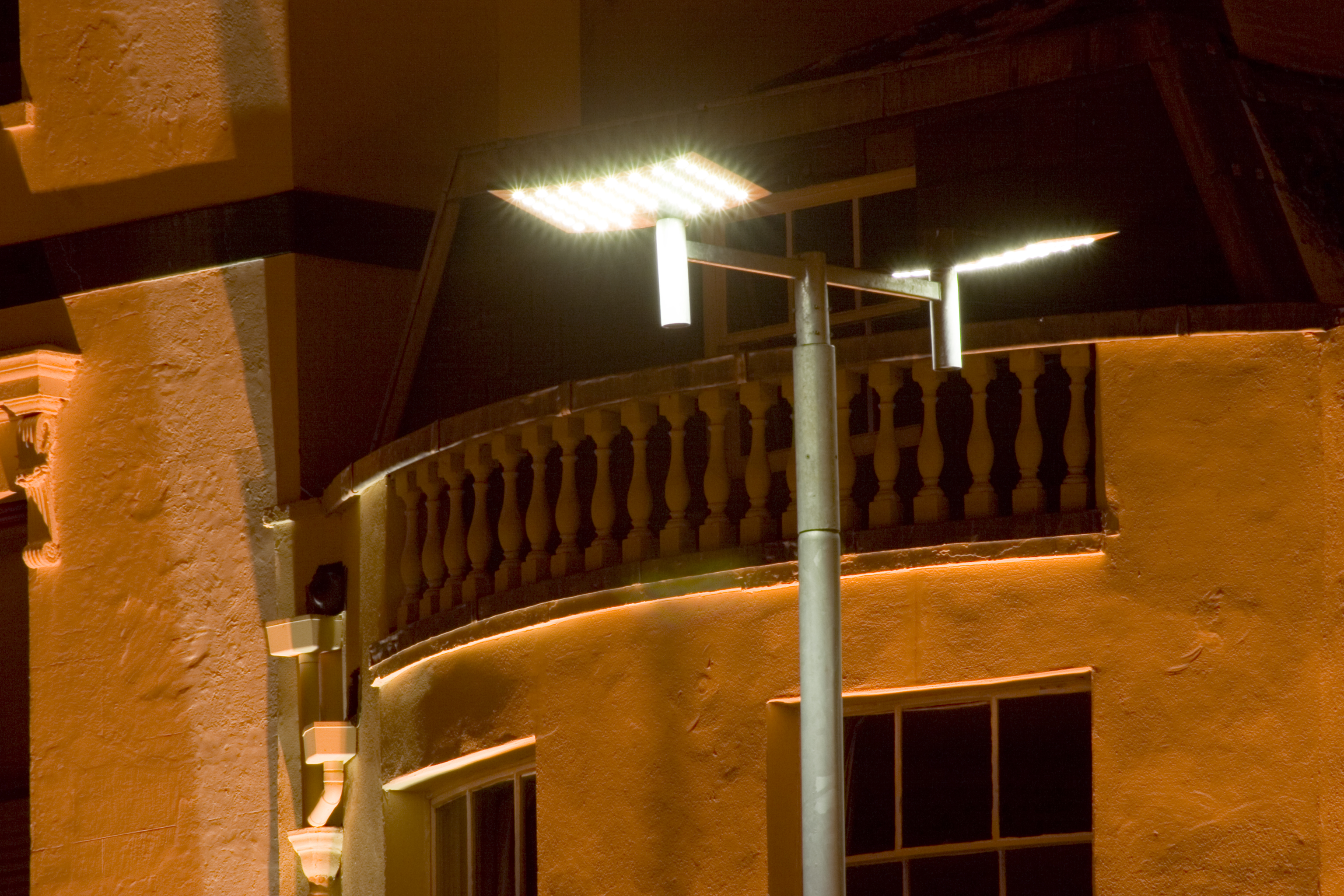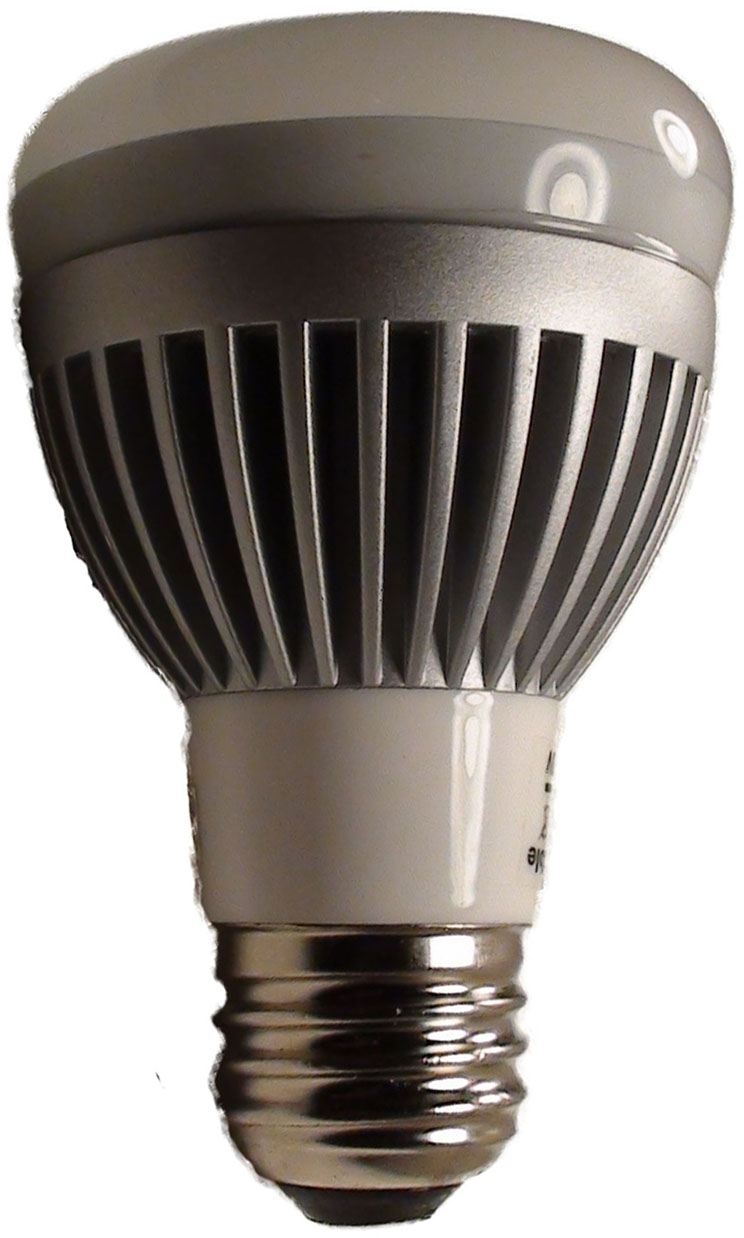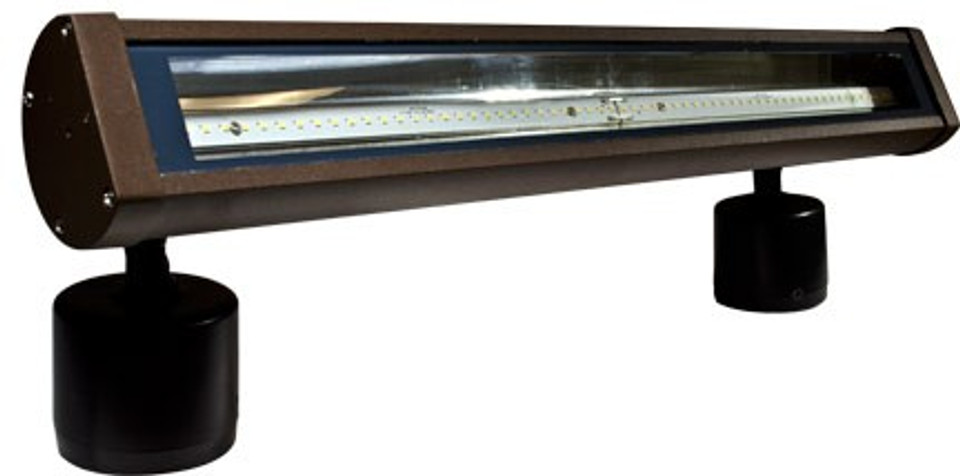Feb 19th 2014
7 Major Benefits of LED Lighting
signs and awnings easily.
LED lighting is hitting the market with astonishing popularity and once you understand the benefits of LED light bulbs, it’s not hard to understand why. While the light bulb has switched on for some people, others still remain painfully unaware.
What are they?
LED stands for light emitting diode. These aren’t your standard incandescent bulb – they don’t have a traditional filament and chemical coated glass casing. Instead they use a semi-conductor paired with a reflective cavity. They are primarily used in electronics and traffic signals, but have other applications as well.
For example LED floodlights are becoming increasingly used tools for large outdoor sign lighting – they are incredibly bright and cost efficient so it makes sense that they are being used more and more often.

Seven Benefits of Using LED lights.
LED lights are popular for a reason, and there are several things that these lights have in their favor.
7. LEDs can be focused and brighten up right away- light is not wasted. Light pretty much goes where ever it wants, but with LEDs it’s easier to focus them into a beam or into one area. In addition, the lights are bright right away: no more waiting for them to get brighter.
6. LED bulbs are not as fragile as other bulbs. Light bulbs are generally made out of glass, coated with chemicals. If you drop them, they’re toast, and if they get too hot, they can explode. LED bulbs aren’t built that way – their casing is a small cavity that is resistant to damage and breakage.

possibility for cities. Photo Credit: Flickr
5. LED lighting has a wider range of application. Because of the size, the way they are made, their toughness and their focus ability, they can be used more often industrially, commercially, and at home.
4. LEDs are entirely cost efficient. A study conducted by the US Department of Energy put LED lights in several of the aforementioned applications – and not just a few. 49 Million LEDs went into traffic lights, street lights and other various installations; the same study showed that the lights saved the equivalent of $675 million dollars.
3. LED lamps have a smaller environmental impact. Regular incandescent light bulbs contain mercury and sometimes the inside of the glass casing is powder coated. They fill up landfills and other waste receptacles. LED bulbs have none of those components and are completely recyclable, and therefore have a smaller carbon footprint.
2. LEDs produce little or no heat. Other kinds of light bulbs produce energy in the form of heat. This makes incandescent bulbs difficult to change “in a pinch” and shortens their longevity. For LED floodlights, which would run for quite a while in possibly inclement weather, producing no heat is very important.

to regulate temperature. Photo Credit: Flickr
1. The bulbs have a long lifespan. The best part about LED lighting is that regardless of initial cost, they will eventually pay for themselves. If a standard LED bulb can last for 25,000 hours, that means that if you turned it on and left it, it would stay on for 3 solid years! Who doesn’t love that?
If LED’s can do all that, they are definitely a green investment. It is safe to say that there will be more installations of these kinds of lights over time, and that they will become more common with time for home use.
